PART.2
An offering for grandma?
The graves beside the pyramids had largely been plundered, possibly in antiquity, by the time archaeologists excavated them. Researchers did find skeletal remains and, in some cases, artifacts.
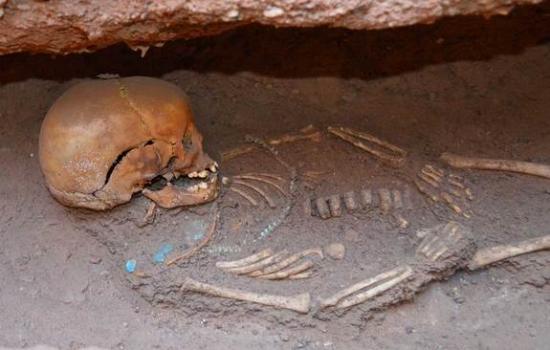
People were buried beside the pyramids in tomb chambers that often held more than one individual. This image shows a child who was buried with necklaces. Credit: Photo copyright Vincent Francigny/SEDAU
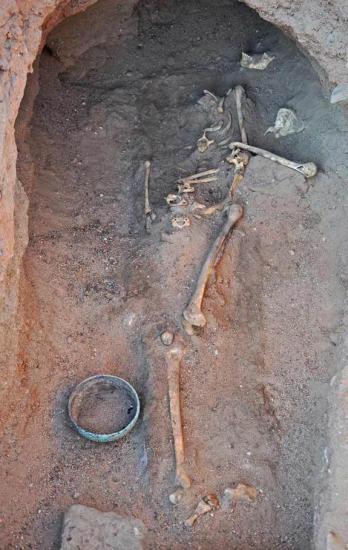
A copper alloy bowl was found in the tomb holding this skeleton. Credit: Photo copyright Vincent Francigny/SEDAU
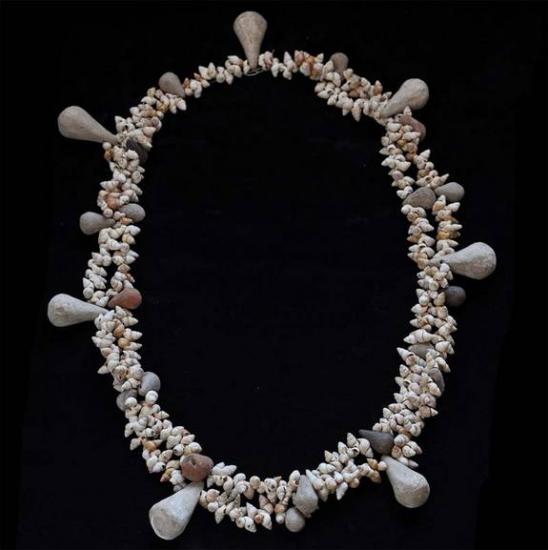
One tomb held over 1,500 colorful beads as well as Nile spiral shells. They appear to be the remains of one or more necklaces. Researchers were able to re-assemble them showing what they may have looked like if they formed a single necklace. Credit: Photo copyright Vincent Francigny/SEDAU
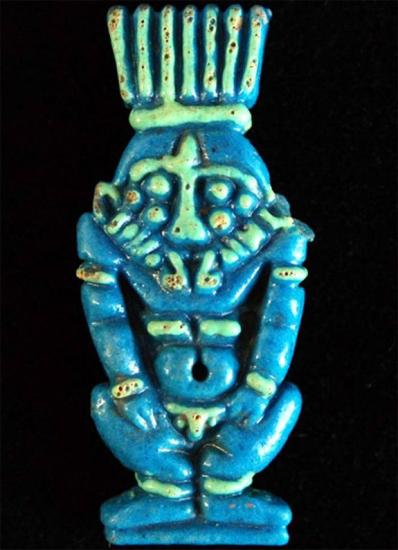
Another find from Sedeinga is this amulet of the god Bes made of glazed faience. Bes was a god often associated with children and pregnant mothers. Credit: Photo copyright Vincent Francigny/SEDAU
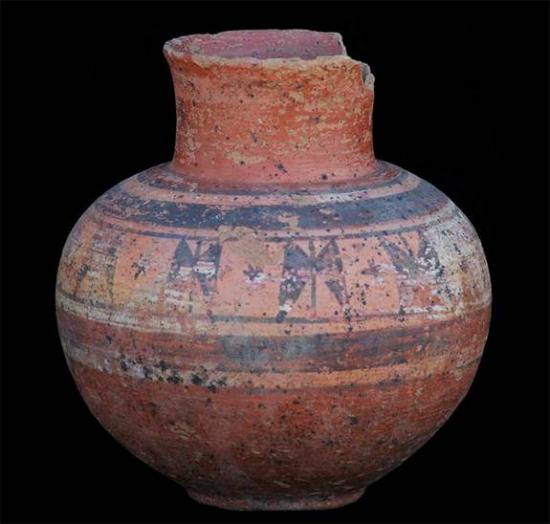
An almost complete bowl decorated with a frieze that resembles double axes with stars in between them. Credit: Photo copyright Vincent Francigny/SEDAU
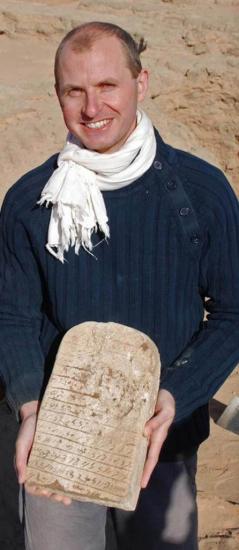
Archaeologist Vincent Francigny shown with a stela discovered at the site. The name of the deceased is lost, but the text has an invocation to Isis and Osiris. Credit: Photo copyright A. Chen/SEDAU
One of the most interesting new finds was an offering table found by the remains of a pyramid. . It appears to depict the goddess Isis and the jackal-headed god Anubis and includes an inscription, written in Meroitic language, dedicated to a woman named "Aba-la," which may be a nickname for "grandmother," Rilly writes.
It reads in translation:
Oh Isis! Oh Osiris!
It is Aba-la.
Make her drink plentiful water;
Make her eat plentiful bread;
Make her be served a good meal.
The offering table with inscription was a final send-off for a woman, possibly a grandmother, given a pyramid burial nearly 2,000 years ago.
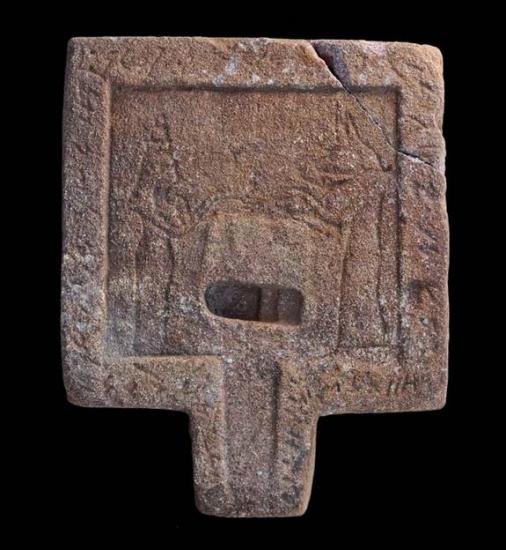
Artifacts with ancient Meroitic writing were also found at Sedeinga. This offering table measures roughly 17 by 14 inches (43 by 35 cm) and depicts the jackal-headed god Anubis and a goddess believed to be Isis. The name of the deceased is "Aba-la," a word that may be a nickname for "grandmother." The inscription asks, among other things, that she be "served a good meal." Credit: Photo copyright Vincent Francigny/SEDAU